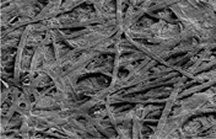A credit card or sheet of paper might look smooth, but under a microscope, these surfaces teem with ridges, pits, and other irregularities. Now, researchers in England have devised a way to translate those random artifacts of manufacturing into unique identification codes. Such codes are difficult, if not impossible, to forge, the developers claim.

Russell P. Cowburn of Imperial College London and his colleagues describe their authentication scheme in the July 28 Nature. A London-based start-up company, to which some of the researchers have financial ties, is already manufacturing a laser-based coding system that applies the new strategy.
The system creates a code by measuring light scattered from a narrow strip of a paper or plastic surface illuminated by a laser beam. The measurements are sensitive to topographic features in the strip as small as hundreds of nanometers high, the researchers say. As the system detects variations in light intensity, it assigns to them 1s or 0s, depending on whether they are brighter or dimmer, respectively, than average for the surface. The result is a binary code identifying the surface.
Even after the researchers crumpled, soaked, baked, or scrubbed scanned pieces of paper, their codes remained readable.
To foil counterfeiting, a pharmaceutical firm might scan and record every package it ships, Cowburn says. Government agencies might scan passports or paper money.
Ravikanth S. Pappu of the Cambridge, Mass.–based company ThingMagic says that the new report validates earlier investigations into using physical features of objects to generate identification codes (SN: 10/5/02, p. 221: Available to subscribers at Beads and glue defeat forgers). That’s “an idea whose time has come,” he says.





